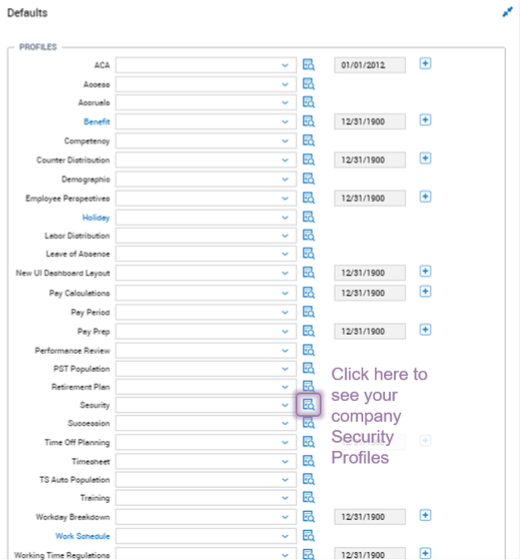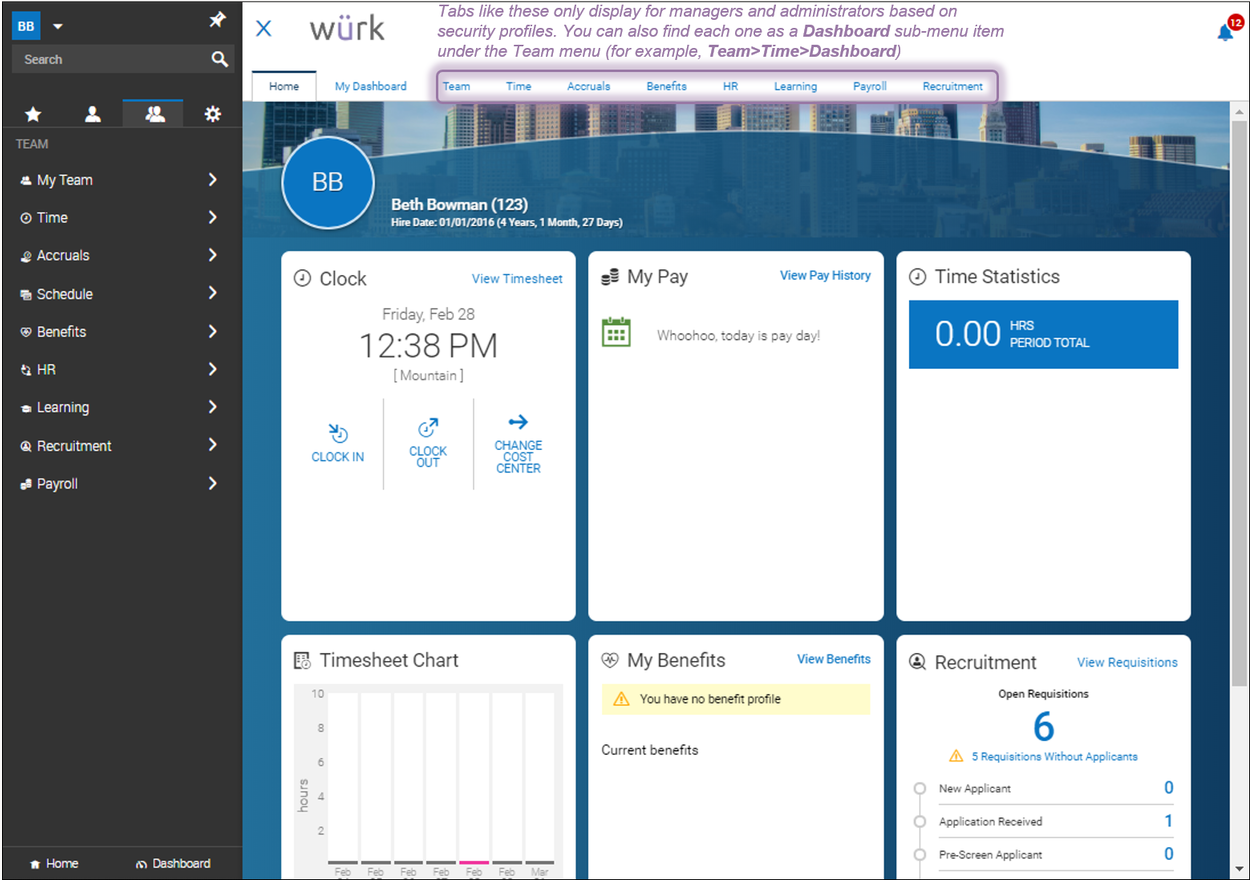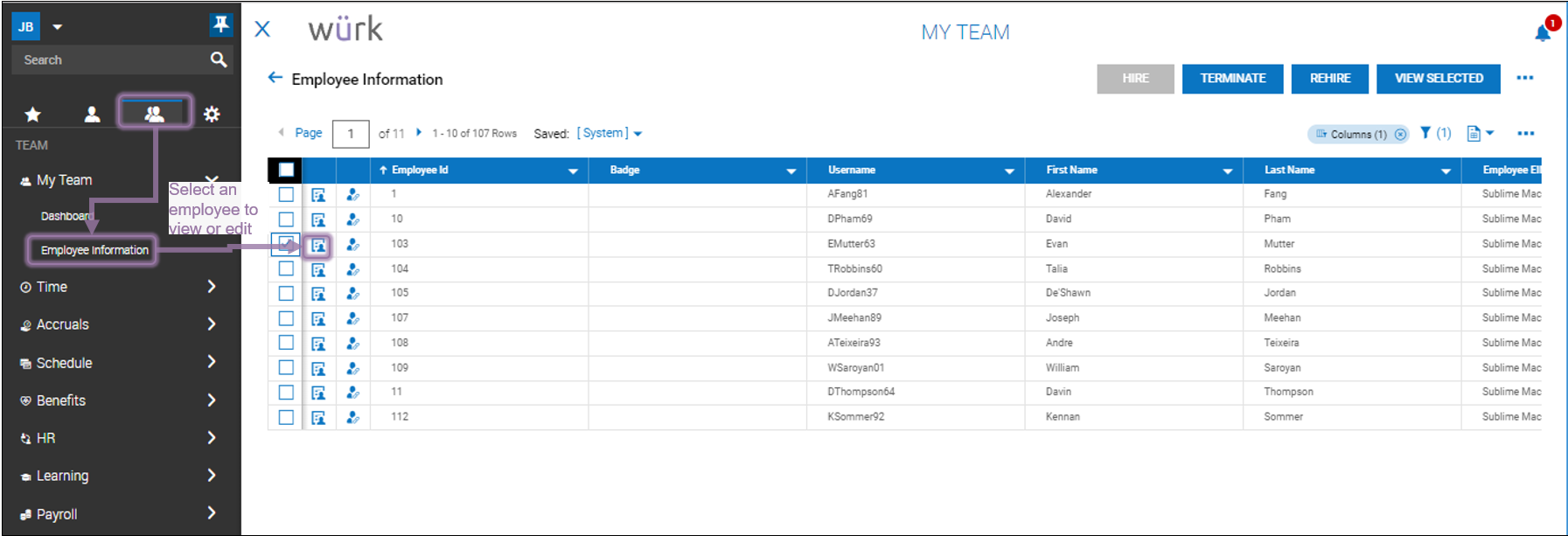What are Profiles?
A Profile in Wurk is a set of rules that can be applied to many employees and situations. For example, within each job description defined for your company, you can assign various profiles, such as for whether the employee is eligible for benefits or holiday pay, or the type of work schedule they follow (like for a grow site with 24-hour days versus an office with 9am-5pm hours).
These profiles are essentially shortcuts for defining what the employee can see and do in Wurk, and for what their managers and HR and payroll specialists can do for them in Wurk. Another way to think of Profiles is “defaults”: each profile can preset aspects of the employee’s Wurk information and be reused again and again for each new hire. Once you pull in defaults from a profile to an employee record, you can then edit those settings to customize them for that employee.
Profiles can be set at the EIN level, the Cost Center level, or the Job level. That means that if a Holiday profile has been applied, for example, to a Cost Center, those holidays will apply to everyone in that Cost Center. To make an exception, you would have to edit the specific employee’s job description.
When setting up your Wurk system, your Implementation consultant defines these based on your specifications and business needs. To see the profiles defined for you company, you can navigate to any job description and click the dropdowns in the Profiles (Defaults) section. This shows you all the profiles defined for your company.
If you need to add more or change the ones set up for you (for example, if your business grows and you find that your hiring managers are having to make lots of repetitive edits to the defaults carried over from your profiles), contact your Wurk Account Manager to request updates. Note, however, that Pay Period Profiles are designed to simplify the process of hiring salaried versus part-time employees, and requesting additional Pay Period Profiles may cause duplicate or conflicting timesheets.
What are Security Profiles Used For?
Security Profiles control what your users can see and do in Wurk, including the menu options that display for them on the main menu. During implementation, these profiles are associated with users who have access to your system. For example, a Department Manager will have access to managerial functions like reviewing timesheets, but not administrative ones like controlling other users’ security access. Shown below are the typical security profiles built into most Wurk systems.

Security profiles not only control what users see on the main menu, but also the dashboards they have access to.
Dashboards for Managers and Administrators
If you are an administrator or manager, you will see tabs along the top of the Home page in Wurk, which may include items highlighted below. Each tab contains dashboards for that module of Wurk. You may have permissions to customize your dashboards, meaning that you can add charts you have created to your dashboard for faster at-a-glance views.
 From these dashboards (and/or your Saved Reports), you can open one of the dashboard tabs and click-through on the title of the chart. This will take you to the report that was the source of the chart. From there, you can create your own charts to show on your dashboards.
From these dashboards (and/or your Saved Reports), you can open one of the dashboard tabs and click-through on the title of the chart. This will take you to the report that was the source of the chart. From there, you can create your own charts to show on your dashboards.
The most important security roles to understand are the ones you assign to your managers and employees. When a user in Wurk has a manager role, he or she can then be assigned to users with employee roles. This might mean the manager can see the employee’s profile and make changes to things like the employee’s personal info, pay, deductions, benefits, and so on. As an administrator, as the managers in your company move and change positions, you will need to reassign them to employees. Re-using a Security Profile for each type of manager your company has, with its preset permissions and responsibilities, helps you do this more efficiently and then you always know what that manager can and cannot do and see in Wurk. To build familiarity with the standard profiles built into Wurk, see Understanding Security Profiles.



